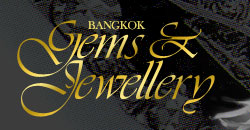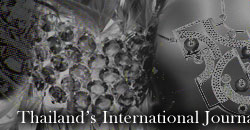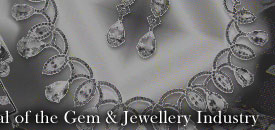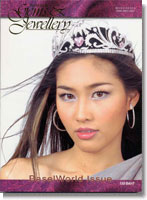| Tourmaline
In Every Colour, At Every Price |
If
there were awards given to gemstones for their various attributes and
qualities, then the top prize for versatility would surely go to tourmaline.
Tourmaline occurs in every colour possible from colourless to black
and every shade and hue in between. In fact, there are more than a hundred
shades to choose from when one gets down to it. Sometimes a single stone
will display more than one colour as in the case of bi-colour and tri-colour
tourmalines.
The most well known of these is the famous
watermelon tourmaline, which has a pink centre and a green rind separated
by a band of white just like in the fruit. Jewellery designers like
to set slices of watermelon tourmaline instead of faceted gems as this
shows off the colour combination to advantage. Another form of bi colour
tourmaline shows a clear heart and a black border and is known as moor's
head tourmaline. |
|
Actually,
tourmaline is not just one mineral, it is a whole family of minerals
related in physical and is a complex silicate of boron and aluminium.
Many different elements are able to find a spot for substitution in
the crystal lattice and this accounts for all the different colours
of the gem. The exact species of tourmaline is determined by which of
a number of possible elements is present in the specimen.
The members of the tourmaline family include
buergerite (brown), dravite (brown), elbaite (multicoloured to green),
schorl iblack), and uvite (black, brown, yellow-green). The elbaite
group can be broken down to include achroite, which is a rare colourless
variety of tourmaline, rubellite (red), and tsilaisite (manganese rich). |
 |
|
|
1
Bicoloured, doubly terminated tourmaline is representative of
some of the fine-quality crystals of this gem.
2 The intense colour of fine-quality copperbearing tourmaline
from the Mina da Batalha in Brazil.
3 Paraiba tourmaline. |
Tourmaline forms in a variety
of geological settings. Mostly, it is found in granite pegmatites
and in their immediate vicinity in the enclosing host rock.
Pegmatitic tourmaline is commonly black and is associated with
microcline, albite, quartz and muscovite. The light coloured
gem tourmalines are much more rare, usually occuring in pegmatite
core zones with quartz, clevelandite, muscovite, lepidolite
and more rarely amblygonite and spodumene.
Other areas of occurrence for
tourmalines are with quartz in hydrothermal veins where heated
mineral bearing liquids or gases from deep igneous sources later
cooled and crystallised along rock fractures, in granites due
to late stage alteration of micas and
feldspars by boron containing fluids, and by boron metasomatism
in contact and regionally metamorphosed rocks. Because of tourmaline's
relatively high hardness and specific gravity, it is often found
in elluvial and alluvial deposits.
|
|
|
As it
is a pegmatite mineral, it is found in the world's great pegmatite districts.
Foremost among these is the land of gems, Brazil. They are also found
in California and Maine in the United States. Apart from the Americas,
there is an abundance of the mineral in Africa as well, mainly in the
East African nations of Kenya, Tanzania, Mozambique and Madagascar.
Malawi produces some beautiful canary yellow material, while gorgeous
rubellites and fine blue-green tourmalines can be sourced in Nigeria.
Nor is Asia left behind as gem material can be found in Afghanistan,
Pakistan, Burma and Sri Lanka as well.
In fact, the name tourmaline has its roots
in the Sinhalese language. It derives from the Sinhalese word turmali,
which means many coloured gemstones. Bright rainbow coloured parcels
of mixed gemstone varieties were called turmali by the Sri Lankan gem
traders and tourmaline's ability to resemble almost any other gemstone,
lives up to the derivation of its names. |
|
It is
composed of long, prismatic crystals. Tourmaline crystals are often
cracked and flawed, especially the reds, pinks and bi-colours, while
the greens and blues are generally much cleaner.
The most common inclusions in tourmaline are fractures and liquid filled
healed fractures. Needle inclusions are also common. Sometimes in fact,
tourmaline itself is found as needle like inclusions in other stones
such as tourmalinated quartz.
Tourmalines are often cut in long rectangular shapes because of their
crystal shape. In fact, the crystal shape is often so beautiful, pencil
thin and ridged, that sometimes designers choose to set it into jewellery
in its rough state itself. As a matter of fact all tourmalines, regardless
of their chemical composition, form similar crystals because they are
isostructural meaning that they share the same internal crystalline
structure. |
|
There
is one particular iharacteristic of tourmaline that is of great advantage
to gemstone alters. Tourmaline is a strongly pleochroic gem. The darkest
colour is always seen looking down the ixis of the crystal. This feature
allows gem cutters to play with the gem cutting darker stones in a way
that will display the lighter of the two pleochroic colours or conversely,
cut a lighter stone in a manner that displays the darker shade. If the
gem is cut so that the c axis is oriented parallel to the table facet,
then the stone will appear lighter in colour. If it is cut in a manner
that orients the table perpendicular to the c axis, then it will display
the richer colour in the stone. |
|
| There
are many other interesting characteristics to this gem. When faces are
present on both ends of a natural crystal, they can be seen to have
developed with different orientations and do not correspond. This phenomenon
is known as hemimorphism, and it gives the stone certain electrical
properties. Tourmaline is pyroelectric, which means that it develops
a charge when it is heated. The Dutch traders noticed this and used
long unfashioned crystals to draw ash from their meerschaum pipes and
thus, they labelled this gem 'ashentrekker', which literally means ash
puller. There is a downside to this magnetic quality though, as tourmaline,
more than any other gem, attracts dust to itself while it is kept in
display cases and thus needs to be cleaned more often than any other
gem. |
|
Tourmaline
also displays piezoelectricity when its crystal is placed under stress.
Pressure will lead to the stone's charging and in the course of discharging,
the plus and minus poles will alternate so that the stone will show
vibrations like rock crystal, only it is much stronger in tourmaline.
This property makes it very useful for application in underwater detection
equipment, and depth and pressure guages. During World War II, it was
much in demand for use in the production of pressure sensitive guages
and submarine instruments as well as other war equipment. It has also
been used as a calibration standard for the manometer and as a standard
to check for the possible effects of water soluble boron used in mixed
fertilisers.
Another feature of tourmaline is that
when slices of it are cut from a prism face along the length of the
crystal, then they have the ability to polarise light. |
|
As mentioned
earlier, tourmaline is a family of groups of minerals rather than a
single one.
Burgerite is a rare species of the tourmaline
family. It is usually easy to distinguish it from the othe more common
tourmalines as it is brown and translucent to opaque However, it is
easily confused wit another less common species dravite. Under normal
circumstances it is difficult to distinguish between' them as they both
look alike. 111! main difference between the two is j that dravite is
formed in metamorphic rocks and burgerite i> formed in igneous rocks.
Anothe: distinguishing factor is the present; of flourine in burgerite.
Dravite" is a little know; species
of tourmaline. Dravite wil sometimes produce large wel shaped crystals
that are importai: speciments in rock collector' hoards.
|
|
Dravite
is brown in colon and is rarely transparent enough to be considered
gem material. However, it can be heat treated to lighten the dark colour
and is therefore sometimes cut into gems. Its crystals are typically
elongated three sided prisms.
Schorl is the most common mineral in
the tourmaline family. It is black in colour. It can form the major
component of metamorphic and igneous rocks and although it is not the
only black mineral common ;o these rocks, it is the only one that will
form crystals with a clear triangular cross section. In fact, long thin
crystals of schorl are common as inclusions in quartz and they form
the ornamental stone known as tourmalinated quartz. By and large though,
schorl has no use as gem material. |
|
Uvite was earlier thought to be a rare form
of tourmaline but it has now become fairly common in the mineral market.
Uvite is the magnesium/iron rich member of the tourmaline family and
has one notable exception to the typical tourmaline generalised formula,
in which the 6 aluminium atoms are reduced to 5 and a magnesium atom
is inserted into the missing aluminium's position.
Another odd thing
about uvite is that in spite of having so many colouring ions like iron
and magnesium, most varieties of this species are actually quite colourless.
Nevertheless, most specimens of uvite in the market are dark green to
black in colour. Another feature that distinguishes uvite from the other
tourmalines is its stubby crystals rather than the long prismatic crystals
of the other species. Uvite crystals are still well formed though, and
show all the interesting features that make tourmaline such a pleasure
to collect.
|
|
Elbaite crystals are recognisable by their prismatic
form, typically elongated like pencils with cross sections that range
between hexagonal and trigonal. Elbaite is also the most strongly pleochroic
of the tourmaline family. It is the mineral responsible for almost all
the gem varieties of tourmaline. Although elbaite is a separate group
of minerals in the tourmaline family, in the gem trade this name is
used to refer to green tourmaline only. All the other forms of elbaite
have their own trade names.
Green tourmaline is the most recognised
of tourmaline colours. They are typically eye clean stones whose colour
ranges from a pastel to a deep vibrant green.
|
|
Chrome tourmaline is a rare variety of green
tourmaline that is found only in Kenya, Zambia, Tanzania and Namibia.
The finest chromes rival the top colour of emerald and offer a more
durable stone for jewellery. The colour is due to the presence of chromium
or vanadium. It was first mined in Tanzania in the early 1960's.
Blue tourmaline is known as Indicolite
and the finest colours of this stone are in the medium dark blue range,
which is very close to the blue of the famed Kashmir sapphires. There
are some which come in turquoise blue-green colours that are close to
but not quite as vivid as paraiba tourmalines. Like green tourmaline,
indicolite is also usually eye clean and inclusions are quite rare.
|
|
The
most famous and rare of all tourmalines is the paraiba nirmaline. It
is one of the world's most unusual gemstones. It was discovered in Brazil
in 1982 and at first it was called electric tourmaline and then subsequently
neon tourmaline. However both these names lacked the cachet of paraiba
(derived from the state of Paraiba in Brazil where it is found), which
is the name that stuck.
|
|
Paraiba
has the most fascinating colour range of any gemstone yet - vivid turquoise,
electric blues, neon green, rich twilight blues. It is the only variety
of tourmaline that contains copper. A study conducted by the German
Foundation for Gemstone Research found that paraiba tourmaline also
contains significant amounts of gold, nearly 8.6 parts per million.
When you take into account that the average gold content of the earth's
crust is 0.007 parts per million, you can appreciate exactly how high
the gold content in paraiba tourmaline is. In fact, if it were not such
a beautiful, expensive (retail prices are said to go up to $20,000 per
carat for the finest specimens) and rare gem, it would be crushed to
salvage the gold. |
|
| Like
tanzanite, paraiba tourmaline is also found in only one location in
the world, in a football field sized patch of land near the village
of Sao Jose da Batalha in the state of Paraiba in northeastern Brazil.
Production is sporadic and doesn't keep pace with market demand. The
mine shafts are hand excavated tunnels upto 60 metres deep and the gem
is found only in thin veins. Therefore, supply will always be strictly
limited and the prices for this gem are not likely to ever decrease.
Yewllow, orange ana gold tourmaline
In 2001, there appeared on the market
beautiful bluish green tourmalines from Nigeria that were just a bit
lighter than paraiba. Like paraiba, these too showed their best colour
after being heated. Also there are no diagnostic features to separate
them from paraiba. The similarity in the chemical components between
the Nigerian and Paraiba stones can be explained by the presence of
the copper mines in Nigeria.
|
|
| Experts
theorise that the presence of this unique gem in only two locations
on two separate continents can be explained by the theory of continental
drift. Continental drift is the seperation of one original super continent
into the different continents we know today by the force of geological
processes and if the coastlines of South America and Africa were put
together they would fit each other just like the pieces of a jigsaw
puzzle. Therefore, it is possible that the gemstone was created in both
Brazil and Nigeria under similar conditions before the two continents
drifted apart.
Pink tourmaline is perhaps the most popular
of the tourmalines for range all the way from the palest light pinks
to hot pink, fuchsia, and orangy pink. Gemmologists feel that the pink,
red and violet colours in tourmaline are produced by the process of
natural irradiation, However, there are artificial enhancements that
can do the same thing. Intense hot pinks can alsok attained by cobalt
treatment. The darker reddish colours tend to be the most included type
of tourmaline because they form near the centre of the crystal pocket
and therefore they generally receive more stress and pressure during
formation. |
|
Then
there is rubellite tourmaline, which is named for the deepest reds that
look like rubies. Eye clean rubellite is among the most expensive kinds
of tourmaline because as mentioned earlier, the reds have a tendency
to be heavily ,included. There is also a rubellite garnet which is generally
clean material and is also at a fraction of the price of rubellite tourmaline.
Thefore if you find a rich ruby red gem which is also eye clean, chances
are that it is rubellite garnet and not , rubellite tourmaline. The
colours range from fuchsia to maroon red to red. The price goes up in
direct proportion to the size, cleanliness and intensity of colour of
the gem.
Watermelon tourmaline is so called because
it quite literally resembles a watermelon. It has a green rind followed
by a white band and a red centre. Sometimes the inclusions in the red
centre look like the seeds of the watermelon. As mentioned earlier,
this kind of tourmaline is cut into slices to best show off the beauty
of the gem. There are also other bi coloured and tri coloured tourmalines
and the colours may separate either along the width or the length and
will thus determine how the stone will be cut to best show off all the
colours.
|
|
1
The Mount Mica Quarry in I'aris, USA is one oldest gem mines in the
United States, 'ing produced tourmaline since 1821.
Slow, careful excavation of the rock is required to open up the crystal-bearing
'pockets" without destroying their valuable contents.
This view shows recent activity by the Plumbago Mining Corporaiton,
2 Tourmaline with stilbite and cleavelandite from a pegmatite in Paprok,
Nuristan Province in Afghanistan.
|
There
is also a rare alexandrite tourmaline which changes colour just like
alexandrite. Its daylight colouring is yellowish/brown green which turns
to red under evening light. Chatoyancy is seen in the cat's eye tourmaline
and this is due to the crystals growing fluid filled tubes along the
long, prismatic axis. These are usually cut as cabochons. There are
also orange and yellow varieties of tourmaline that do not have any
special name to distinguish them and are known by their colour like
pink tourmaline is. Anchorite is a colourless variety of tourmaline.
There is also an attractive purplish coloured tourmaline that is called
siberite. This name applies only to the stones found in Russia's Ural
Mountains. |
|
Almost
each and every colour of tourmaline can be found in Brazil especially
in the gemstone rich states of Minas Gerais and Bahia. Tourmaline is
also mainly mined in Tanzania, Kenya, Madagascar, Mozambique, Namibia,
Nigeria, Afghanistan, Pakistan, Sri Lanka, and in the states of California
and Maine in the United States of America. Some gem tourmaline is also
found in Burma.
Although there is some historical evidence
of tourmaline being used as an ornamental stone as far back as 27 B.C.
to 395 A.D., there is not much folklore built up around it. It was discovered
on the island of Elba early on and hence the name elbaite. The Dutch
brought it from Sri Lanka to Europe in the 1600's and many stones in
the Russian Crown Jewels from the 17th century that were once thought
to be rubies are actually tourmalines.
|
|
The
Empress Dowager Tz'u Hsi, the last Empress of China, particularly loved
pink tourmaline. She is reputed to have bought a ton of this material
from the Himalaya Mine in California and she is said to be buried on
a carved tourmaline pillow. The good news is that you do not have to
be an empress to enjoy this beautiful gem. Apart from the diversity
of colour, its availability also swings from easily available at a few
dollars a carat to the rare can be had only for thousands of dollars
a carat. Therefore there is a tourmaline to suit every taste, every
pocket and allows for bragging rights along a very diverse economic
spectrum. |
|
|




